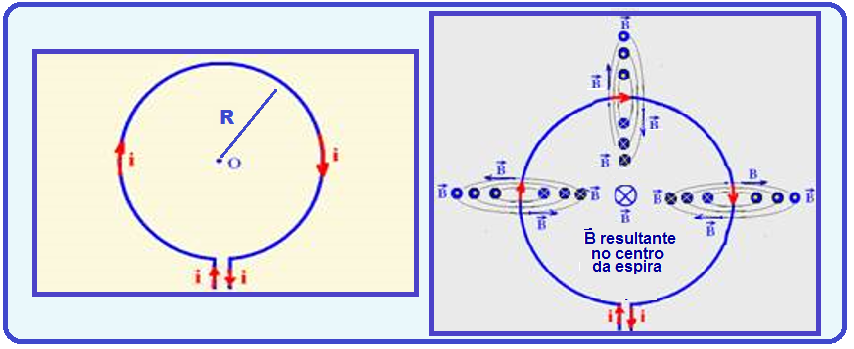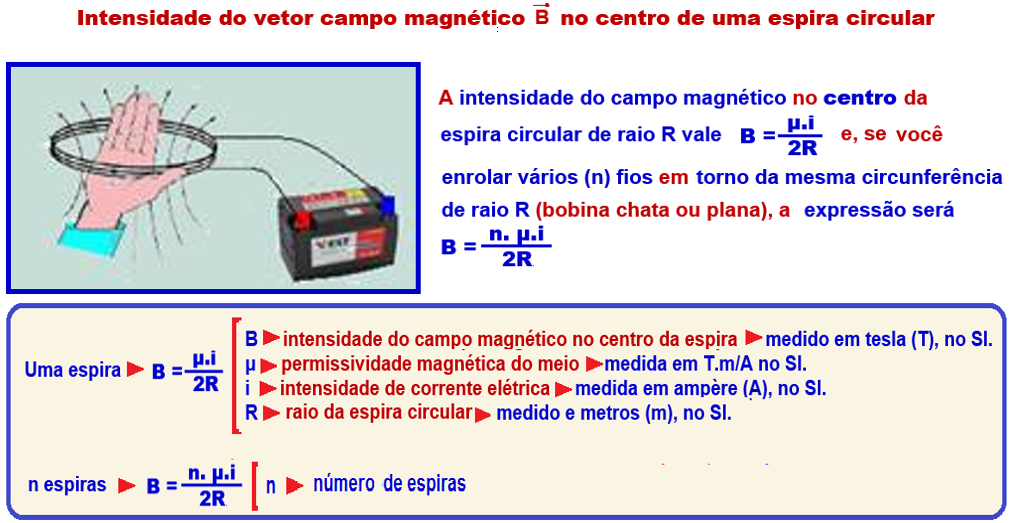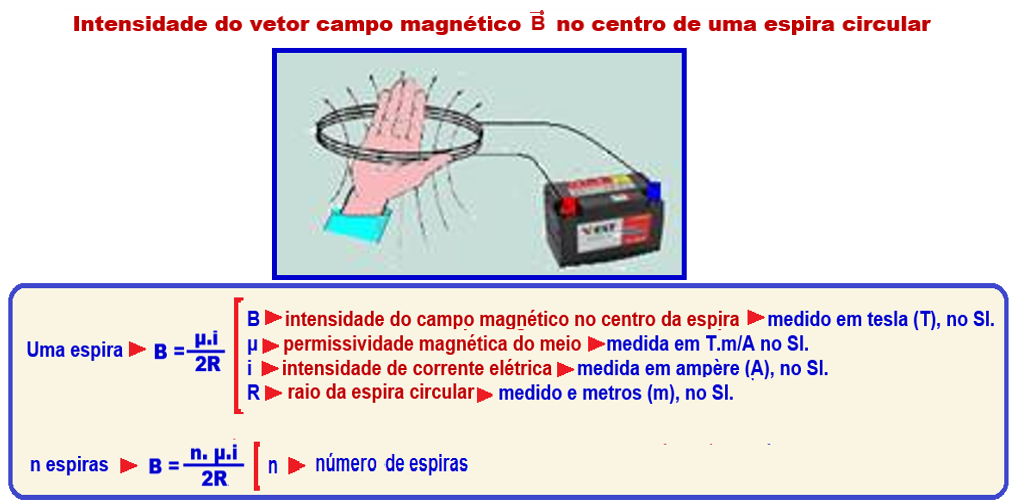Magnetic field generated by a circular coil or by a solenoid EN
MAGNETIC FIELD GENERATED BY A CIRCULAR COIL OR A SOLENOID
Magnetic field generated by a circular coil or a solenoid
Direction and sense of the magnetic field vector ![]() inside a circular loop
inside a circular loop
In the figure on the left, you can see a conductor in the form of a circular coil with center O and radius R being traversed by an electric current of intensity i .

Around the coil (figure on the right) a magnetic field appears whose direction and sense is provided by the right-hand rule (you place your thumb in the direction of the current with your hand open, then you close your hand as if you were going to pick up the wire and the direction of the “closed” hand is the direction of the vector ), considering each small section of the circumference as being a straight conductor.![]()
Note in the figure on the right that in the plane of the circle, all the lines of force have coincident directions and that in the center of the loop, in any position that you use the right-hand rule , the magnetic field ![]() is perpendicular to the plane of the paper and, in this example, entering it.
is perpendicular to the plane of the paper and, in this example, entering it.

What you should know, information and tips
![]()

![]()

Magnetic field inside a solenoid
A solenoid or long coil consists of a conductor wound with a very large number of equal turns, one next to the other, as shown in the figure below.

When the solenoid is traversed by electric current , the configuration of its induction lines is obtained by combining the configurations of each coil, which is equivalent to the configuration of the induction lines of a natural magnet.
Direction of the induction lines inside and outside the solenoid
The direction of the induction lines inside and outside the solenoid is given by the hand rule

right applied to one of its coils (figure 2) and inside it the magnetic field is practically uniform (figure 1 ) and outside there are lines that leave the north pole and reach the south pole.
These lines of force (of induction) of the magnetic field ![]() produced by a solenoid are
produced by a solenoid are

identical to the magnetic field produced by a natural magnet.
In practice, it makes no difference whether a magnetic field is produced by a magnet or by a solenoid.
![]()
Inside the solenoid the magnetic field is practically uniform and its intensity is constant and is:

The above expression is valid for coreless solenoids if you place inside the solenoid

a core of ferromagnetic material, the intensity of the generated magnetic field is greatly increased, it will be an electromagnet (a very powerful magnet).
Uses of electromagnets
They are widely used in the selection and transportation of iron scrap, picking up cars and metal objects.

heavy, circuit breakers, guitar music amplifiers, speakers, loudspeakers, magnetic locks, televisions, MRI, etc.
What you should know, information and tips
![]()


![]()

![]()
The figure represents an electromagnet and a pendulum, whose mass attached to the end is a small magnet .


![]()


